Tempered and laminated are types of “safety” glass – so-called because when they break they do so without endangering the public. But what are the pros and cons of tempered and laminated glass? Learn all about choosing between tempered & laminated glass in this post.
Choose laminated glass to secure your home, to reduce UV light & sound pollution. Choose tempered glass for shower enclosures, patio doors, tabletops & shelves.
The danger of annealed glass
Despite its benefits of transparency and beauty, regular annealed glass has one major drawback – it is brittle and very dangerous when broken. Razor-sharp shards from broken doors, windows, and tabletops can be life-threatening.
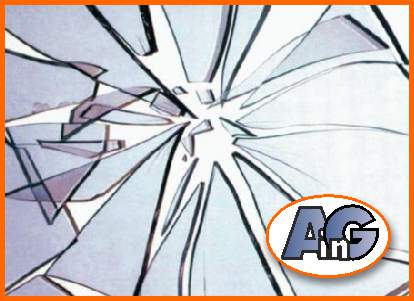
For this reason, a number of special products have been engineered to make glass safe. Safety glass is the general term for these products and the two main categories are tempered and laminated glass.
For more information on annealed glass, study this post about glass shelving.
As an Amazon Associate, I earn from qualifying purchases
Safety glass
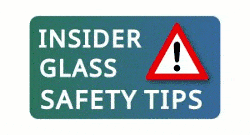
Safety glass refers to glass engineered to avoid injury or death when broken. The two most popular types of safety glass are tempered and laminated.
Tempered glass
Tempered glass qualifies as safety glass because it is hard to break and when it does so, it forms harmless popcorn fragments. Follow this post to learn all about how tempered glass is made.
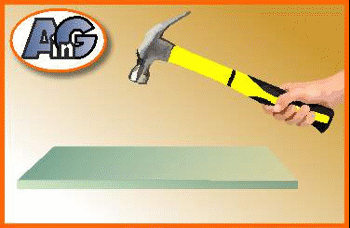
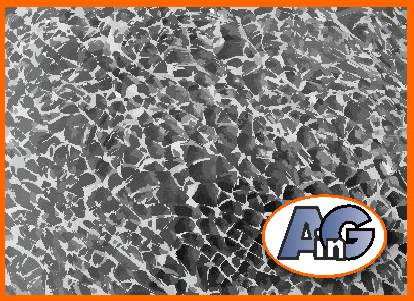
Remember – always make the safety of your family your main priority – study this post to see whether your glass tabletop should be tempered or annealed.
Tempered glass cannot be cut or drilled – follow this link to see how to find out if your glass is tempered.
Laminated glass
Laminated glass is also categorized as safe because it is made with a vinyl interlayer that holds broken glass in place and prevents dangerous shards from injuring or even killing bystanders.
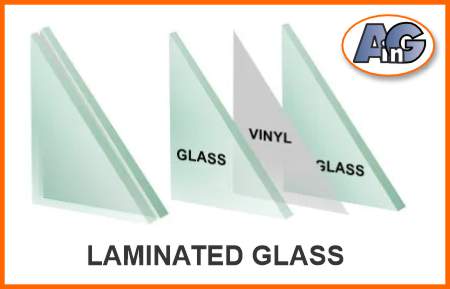
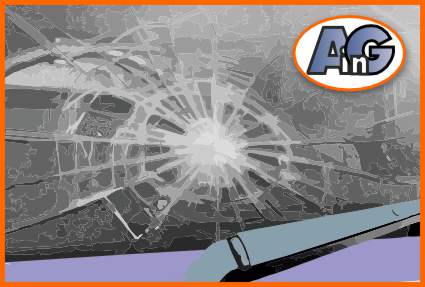
The crucial quality of laminated glass is that it maintains its integrity – protecting car passengers from broken glass and securing homes and businesses against forced entry.
There are a large number of special types of laminated glass, developed for applications ranging from vehicles, airplanes, hurricane, and bullet resistance.
For a summary of the applications of tempered and laminated glass – jump to this table:
Choosing between tempered & laminated glass
Although they are both classified as safe, tempered and laminated glass have distinct pros and cons in relation to the following issues:
Benefits of tempered and laminated glass – a comparison
Security
The primary reason to use laminated glass is for security against intruders breaking into your home or business. Annealed glass is easy to break and the potential burglar has immediate access to your valuables.
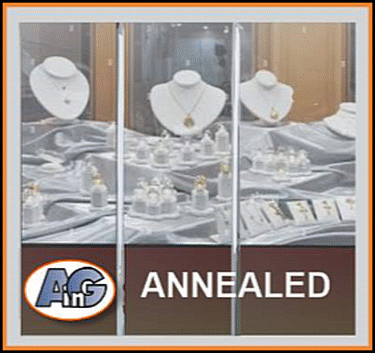
Tempered glass is stronger and takes a heavy blow with a hammer to break BUT once broken, the intruder also has easy access to your home or business:
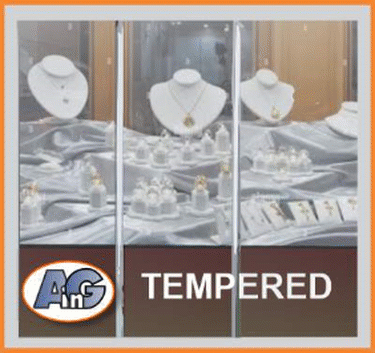
Laminated glass has the vital quality of maintaining its integrity and preventing easy access to your building. Impacts with bullets or hard objects produce the characteristic spider’s web fracture patterns but the glass is held in place by the vinyl interlayer.
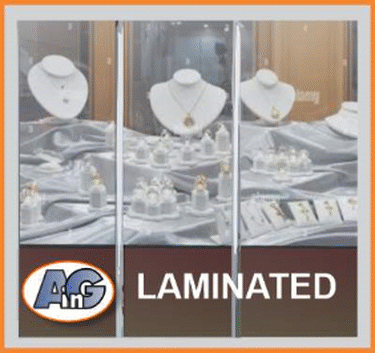
Customers with extra security concerns can choose tempered laminated glass – combining the impact-resistance of heat-strengthened (tempered) glass with the security of laminated, If you are the custodians of extremely valuable or precious objects, even thicker, bullet-resistant laminated glass is recommended.
Strength
Tempered glass is more impact-resistant than standard laminated glass and is also less expensive. It is therefore the preferred type of safety glass for shower enclosures, tabletops, and interior doors.


In summary – tempered glass is preferred where strength and safety are necessary but security (prevention of entry to a building) is not a paramount concern.
UV protection
The PVB (polyvinyl butyral) interlayer cuts almost 100% of UV (both UVA and UVB) light and is beneficial in several ways.
Fading of fabrics, artwork, carpets
UV light, sunlight, and heat combine to break down chemical bonds in dyes resulting in the fading of fabrics, artworks, and carpets. The PVB (polyvinyl butyral) interlayer cut almost 100% of UV (both UVA and UVB) light and therefore is an excellent method to prevent fading of artwork, furniture, and valuable Persian carpets in homes and public buildings.
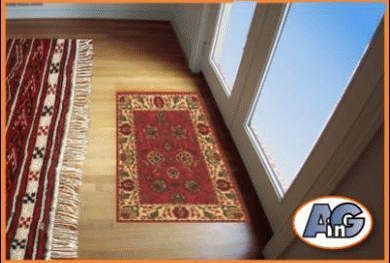
UV window tinting
Note that if you are concerned about fading but have annealed or tempered glass windows, you can block UV light by retrofitting it with UV film. The best-selling example below is available on Amazon.
Anti UV window tint for home and office black silver 6 mil 17.5 Inches x 6.5 feet. This film also provides daytime privacy & heat control. Static non-adhesive application.
Medical benefits of cutting UVA radiation.
Evidence from professional drivers in the USA shows preferential aging and propensity to skin cancer on the left side of the face – caused by UVA light entering through the driver’s side window. This dangerous skin damage becomes obvious after prolonged driving (30 + years) in vehicles (tractors for example) without UV-blocking laminated glass.
Sound insulation
Noise pollution is a serious problem in our busy modern world. Traffic noise and neighborhood noise (loud music & parties) are very annoying and can even be hazardous to health.
The PVB interlayer in laminated glass has unique sound-dampening properties and regular laminated glass is about 30% more effective at sound reduction than insulated glass. See this website for an excellent description of sound insulation.
Special configurations of laminated, coated and insulated glass have been engineered for recording studios and other rooms where silence is vital. These expensive products include 3/8″ thick laminated glass with various air spaces and additional inclined, noise-absorbing materials.
Artistic expression
Laminated glass provides a unique opportunity to incorporate art into large windows. With modern digital techniques, the vinyl interlayer can be imprinted with color-fast inks to provide privacy and customized decorative effects:
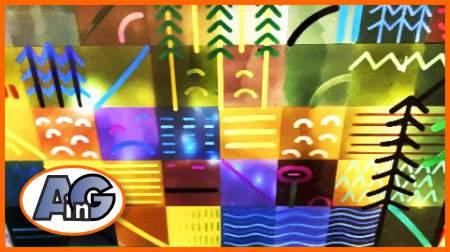
It is possible to print on tempered glass but the process is very expensive and the artwork (on the surface of the glass) is vulnerable to damage.
We recommend this ammonia-free spray cleaner available at Amazon or Costco – Excellent for windows, mirrors, and other glass surfaces. Heavy-duty foam clings to vertical surfaces & contains perfume-grade alcohol for best performance.
Cost comparison
Recent (July 2022) price increases for flat glass have rocked the glass industry – jump to this footnote on price increases for details.
However, laminated glass is still significantly more expensive than tempered glass as the following price calculation (updated Sept 22) module shows:
Size constraints
Amazing innovations have allowed extremely large glass panels to be manufactured. The world record is currently a 17 * 3 meters ( about 56 ft * 10 ft) panel of laminated, tempered insulated glass weighing 6.5 tons.
However, on a much smaller scale, there is a lower size limit for a tempered glass of about one square foot because of the rollers in the tempering furnace.
Table comparing the uses of tempered & laminated glass
| Application | Tempered | Laminated |
| Shower Enclosures | X | |
| Tabletops | X | |
| Patio tables | X | |
| Shelves | X | |
| Kitchen backsplashes | X | |
| Greenhouse glass | X | |
| Exterior doors | X | X |
| Glass floors | X | X |
| Vehicle windshields | X | X |
| Hurricane resistance | X | |
| UV protection | X | |
| Soundproofing | X | |
| Storefront windows | X | |
| Security glass | X | |
| Colored art glass | X |
Special types of laminated glass
Human ingenuity has devised numerous combinations of glass laminations to serve a variety of purposes from vehicle windshields, aircraft windows, skydecks, glass stairs, hurricane- and bullet-resistant windows.
Vehicle windshields
Vehicle windshields (about 1/4″ thick) are made of two sheets of tempered glass separated by the PVB interlayer. The process begins when glass is placed in a mold to match the curvature of the automobile window. The curved glass is then tempered, and laminated with the PVB interlayer and all three layers are fused together in an autoclave.
Aircraft & space shuttle windows
The Concorde supersonic airplane had forward windshields composed of seven layers – 4 glass and 3 PVB total for a total thickness of 38 mm (1 1/2″).
The windows on the space shuttle were made of triple-paned laminated, fused silica, and aluminum silicate glass for a total thickness of more than 5 inches.
Willis Tower skydeck
The transparent floors of the Skydeck are made with 1,52 mm SentryGlas® interlayers sandwiched between three half-inch panes of fully tempered low-iron glass, a combination that’s unmatched for strength and clarity.
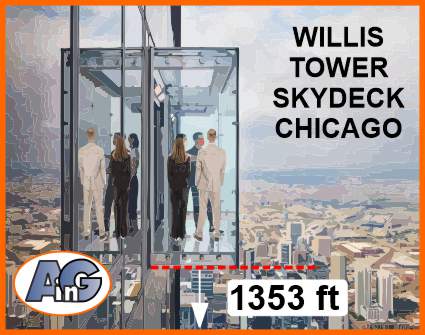
Compared with traditional interlayers, SentryGlas® is reported to be five times tougher and up to 100 times stiffer, making it an ideal choice for improved structural performance in applications such as flooring, balustrades, building facades, and security glazing.
Hurricane resistant glazing
Specially strengthened vinyl interlayers have been developed for extra resistance to hurricane debris. The market leader is the SentryGlas® ionoplast interlayer which is claimed to be five times stronger and 100 times stiffer than conventional laminating materials.

SentryGlas® interlayer retains its clarity – even after years of service and is much less vulnerable to moisture exposure or yellowing over time.
Bullet-resistant glazing
No glass is completely bullet-proof but laminations of glass and polycarbonate with vinyl interlayers offer various degrees of protection depending on the number and thickness of the layers. Level 2 protection (7/8″ thick) will stop .9mm and .357 Magnum handguns whereas 2 1/2″ thick composite panels will stop an armor-piercing rifle.
The uses of tempered and laminated glass
Although they are both categorized as safety glasses, tempered and laminated glass have very different uses.
Choose laminated glass to secure your business and home against illegal entry, eliminate UV fading, and to reduce sound pollution.
Choose tempered glass for safe and strong shower enclosures, patio doors and glass tabletops.
Choose a combination of tempered and laminated glass for vehicle windshields and special engineering applications like glass stairs, bridges, and skydecks.
Glass tabletops & shelves – info from Artistry in Glass
- Benefits of glass shelving – info from experts!
- How much do glass tabletops cost?
- Do glass shelves need to be tempered?
- What is the best thickness for glass shelves?
- Best edge type for glass shelves, polished or beveled?
- How much weight can a wall shelf carry?
- What color glass should my shelves be?
- Glass tabletops – 10 amazing benefits explained
- How to order a glass tabletop
- Best thickness for glass tabletops – expert advice
- Should glass tabletops be tempered?
- Should glass tabletops be beveled?
- How to paint a glass tabletop
- All about tempering glass tabletops!
- How to tell if your glass is tempered
- Can tempered glass be cut?
- How to protect your wood table with glass
- How to fix a scratched glass tabletop
- How to fix a chipped glass tabletop
- How to replace broken patio table glass
- How to measure for a glass tabletop
- Video – how to measure your tabletop
- Plexiglass vs glass – pros and cons
- Beveled glass table base – a case study
- Choosing between tempered & laminated glass
- Glossary of terms used in the glass business
Price increases in July 2022
Shock glass pricing update
Effective July, 2022 the wholesale price of float glass & mirror has increased by between 20 and 40% According to the USGLASS News Network: “The combination of material cost increases, supply chain disruptions along with other economic pressures has forced companies throughout the globe to raise prices. These volatile factors have also impacted the glass industry, which has recently seen major companies such as Guardian Glass announce price increases and surcharges. Guardian is not alone, as five other industry companies issued price increases. These include Viracon, Vitro, Kuraray, Blue Star Architectural Glass and Oldcastle BuildingEnvelope®”.
To readers of the Artistry in Glass website – please note that glass & mirror prices quoted in various calculators should be multiplied by around 35% to obtain current retail pricing.





